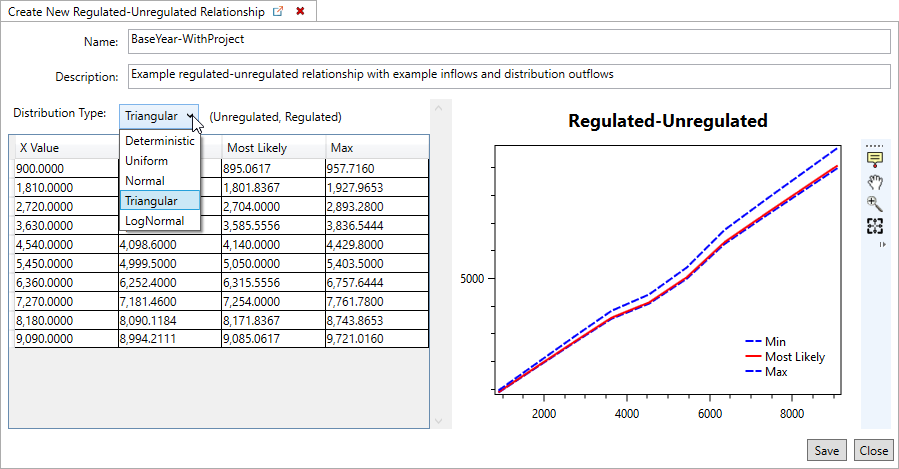What is a Regulated-Unregulated Flow Function?
The relationship defines the flow transformation between unregulated flows into regulated flows. An example is an inflow-outflow function. An inflow-outflow function defines the outflow (flow) rate from a reservoir for a given inflow into the reservoir.
What is the Purpose of a Regulated-Unregulated Flow Function?
A regulated-unregulated flow function is used to model the way that a structure such as a dam reduces the flow rate, and represents a part of the hazard piece of the risk equation. When dams are used to reduce peak flow rates, lower flows mean lower stages and therefore lower damages.
Where Do I Get a Regulated-Unregulated Flow Function?
Engineers develop this relationship using hydrologic software, including but not limited to, HEC-ResSim and HEC-HMS.
Working with Regulated-Unregulated Flows in HEC-FDA
The regulated-unregulated flow function should be provided as paired data with uncertainty: a column of inflows and columns defining the outflow distributions.
Differences Between HEC-FDA Versions 1 and 2
Regulated-unregulated flow functions are entered as unique objects. That is, regulated-unregulated flow functions are no longer entered through the frequency function dialogue.
Steps to Define a Regulated-Unregulated Flow Function
To create a regulated-unregulated transform relationship:
- From the Study Tree right-click on Regulated-Unregulated Transform Functions and select the create new option.

- Enter the name for the function and a description (optional, but recommended).
- Select the Distribution Type from the options:
- Deterministic
- Uniform
- Normal
- Triangular (default selection)
- LogNormal
- Enter the inflows and specify the distribution of outflows.

- Click Save and Close to create the new relationship.